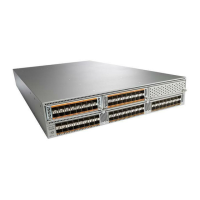DescriptionKeystokes
Moves the cursor one character to the right.Ctrl-F
Exits to the previous command mode without
removing the command string.
Ctrl-G
Deletes all characters from the cursor to the end of
the command line.
Ctrl-K
Redisplays the current command line.Ctrl-L
Displays the next command in the command history.Ctrl-N
Clears the terminal screen.Ctrl-O
Displays the previous command in the command
history.
Ctrl-P
Redisplays the current command line.Ctrl-R
Transposes the character under the cursor with the
character located to the right of the cursor. The cursor
is then moved one character to the right.
Ctrl-T
Deletes all characters from the cursor to the beginning
of the command line.
Ctrl-U
Removes any special meaning for the following
keystroke. For example, press Ctrl-V before entering
a question mark (?) in a regular expression.
Ctrl-V
Deletes the word to the left of the cursor.Ctrl-W
Lists the history of commands you have entered.
When using this key combination, press and release
the Ctrl and X keys together before pressing H.
Ctrl-X, H
Recalls the most recent entry in the buffer (press keys
simultaneously).
Ctrl-Y
Ends a configuration session, and returns you to
EXEC mode.
When used at the end of a command line in which a
valid command has been typed, the resulting
configuration is first added to the running
configuration file.
Ctrl-Z
Displays the previous command in the command
history.
Up arrow key
Cisco Nexus 5500 Series NX-OS Fundamentals Configuration Guide, Release 7.x
50 OL-30890-01
Understanding the Command-Line Interface
Keystroke Shortcuts

